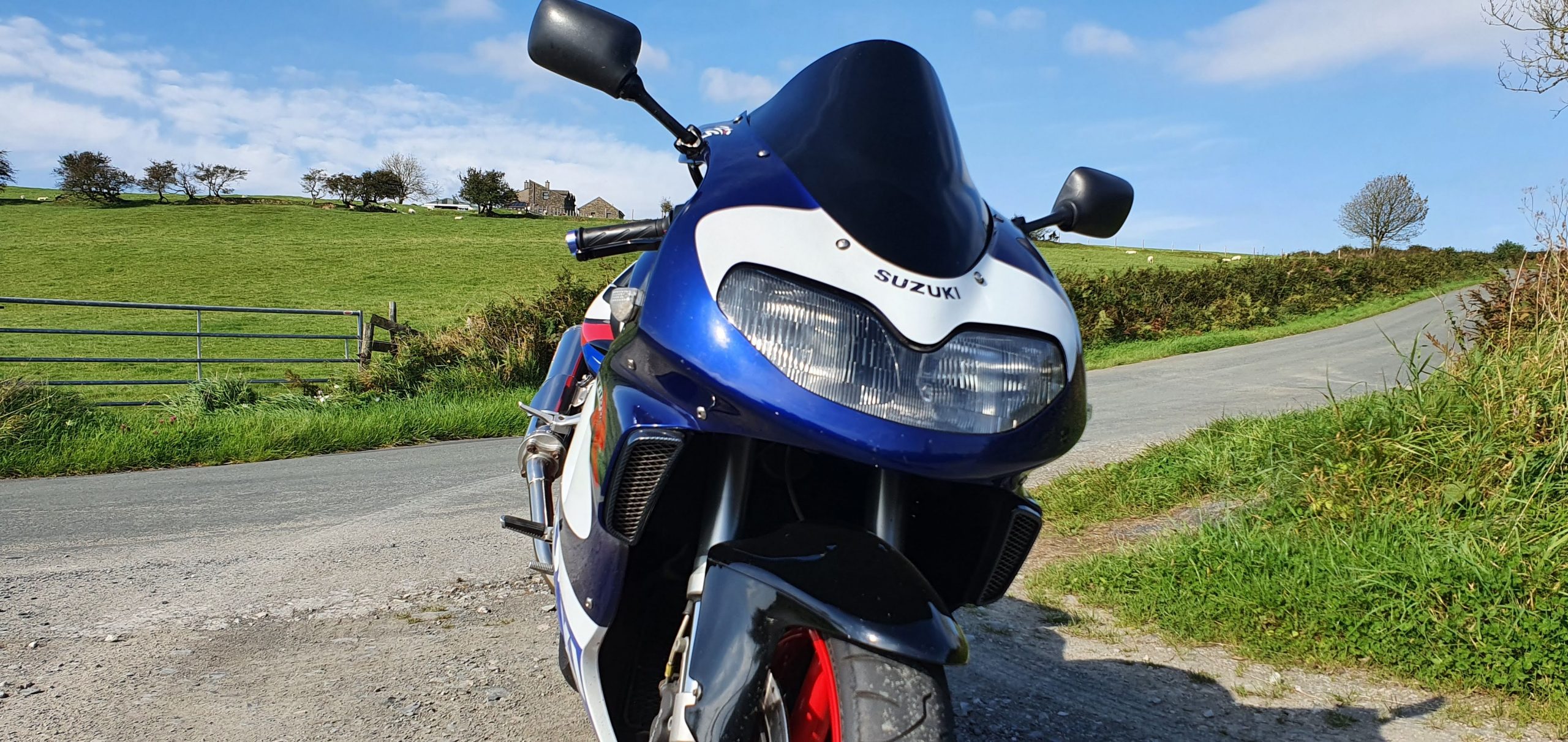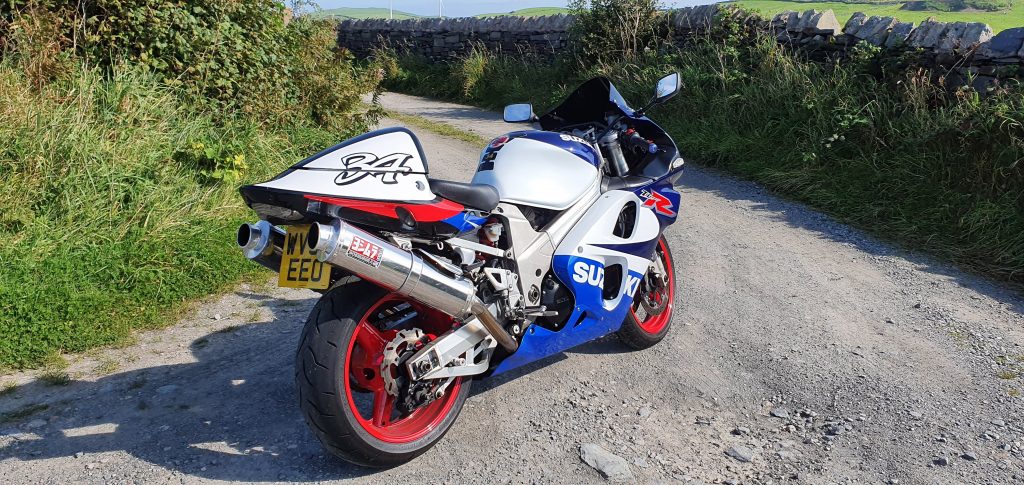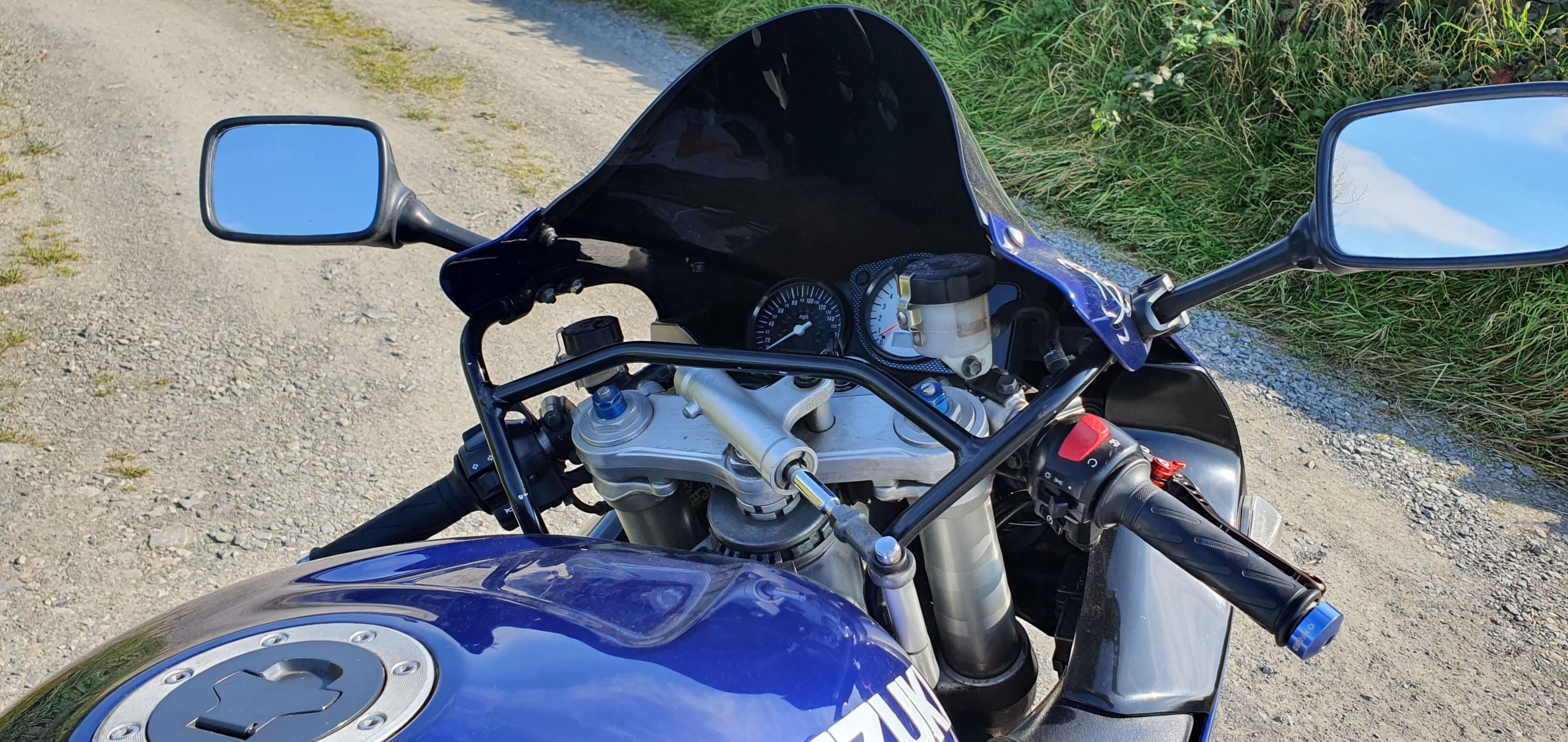1998–2003 Suzuki TL1000R Review — Specs, Rotary Damper Issues & Buying Guide
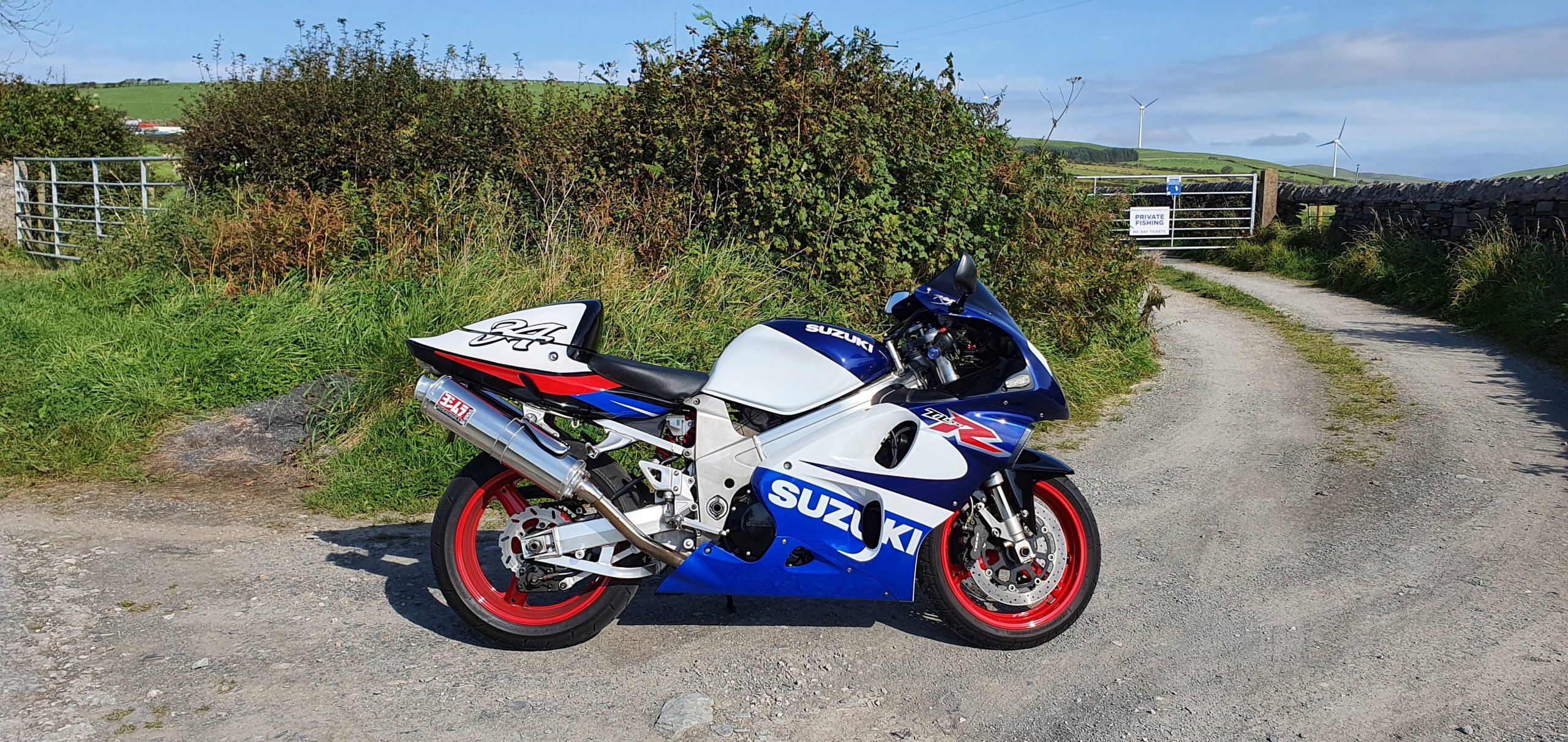
1998–2003 Suzuki TL1000R Review — Specs, Rotary Damper Issues & Buying Guide
1998–2003 Suzuki TL1000R Specs
Updated August 2025
| Production years | 1998–2003 |
| Engine | 996cc 90° V-twin, DOHC, 8 valves, fuel injected |
| Power | ≈135 bhp (99 kW) @ ~9,500 rpm |
| Torque | ≈101 Nm (74 lb-ft) @ ~7,500 rpm |
| Top speed | ~170 mph (≈274 km/h) |
| Seat height | ~805 mm |
| Weight | Dry ~197 kg • Wet/kerb ~230 kg |
| Fuel tank | 17 litres |
Suzuki’s forgotten superbike…a story of what could have been.
The Dominant V-Twin:
During the mid to late 90’s Ducati were busy showing the world how to dominate superbike racing with a v-twin. R&D teams from all the top manufacturers were all busy exploring options on what they could bring to the table to compete. Suzuki were already dabbling with a twin in the form of the TL1000S. It’s safe to say that the S didn’t leave a very lasting impression on many enthusiasts. While the engine was great, the handling really let the bike down. Second generation S’s came with a steering damper as standard which was a partial improvement, but didn’t fix the problem.
A year later, Suzuki went back to the drawing boards and came back to us with the TL1000R. This bike was aimed at making up for the shortcomings of the S and was 100% focused on succeeding on the track. The trellis frame of the S was scrapped in favour of a stronger beam frame based on the GSXR 750 of the time, the swing arm was stronger and much needed improvements to the suspension were made, with a revised version of the S’s damper setup and a separate rear shock. The V-twin motor is a revised version of the S’s engine, but this time we have things like forged pistons and stronger connecting rods. All this provides a quoted 135 BHP to play with.

Sadly, from here on the TL1000R’s story is that of disaster. The bike was a flop on the on the racetrack. Suzuki put together a £50,000 WSB Factory Package of which they didn’t sell a single one. As a result, this lead to showrooms struggling to shift the road-going bike. In the early 2000’s Honda brought along their SP1 which did very well from the get go, this was another nail in the coffin for the TL1000R. In 2003 Suzuki pulled the plug with the entire TL range in replaced it with the Suzuki SV range for their V-twin offerings.
Setting off:
One of the first things you notice is the bike doesn’t feel anywhere near as big as it looks. The large rear seat hump gives you a false expectation that the bike is going to feel huge. In reality, it’s short wheel base doesn’t make it feel any bigger than your standard sports bike. The seating profile is quite aggressive, you’re leaning quite far forwards but not so much that it’s uncomfortable.
The bike feels quite unusual negotiating around town, it’s feels REALLY heavy at the front and takes a bit of manhandling to get it to go where you want. Power is deliver is very linear and gear changes are silky smooth.
Leaving town and joining the larger A roads give me the first chance to properly hear the bike…and what a noise! This particular bike sports Yoshimura end cans which only amplified the already great soundtrack. The bike pulls hard all the way to the redline and never seems to run out of steam. Approaching a corner at speed, I would be lying if I said I wasn’t a little nervous. My experience of the sketchy handling had town hadn’t filled me with confidence! The bike still feels really heavy at the front, oversteering is in this bikes nature and it’s dangerously easy to end up on the wrong side of the road.
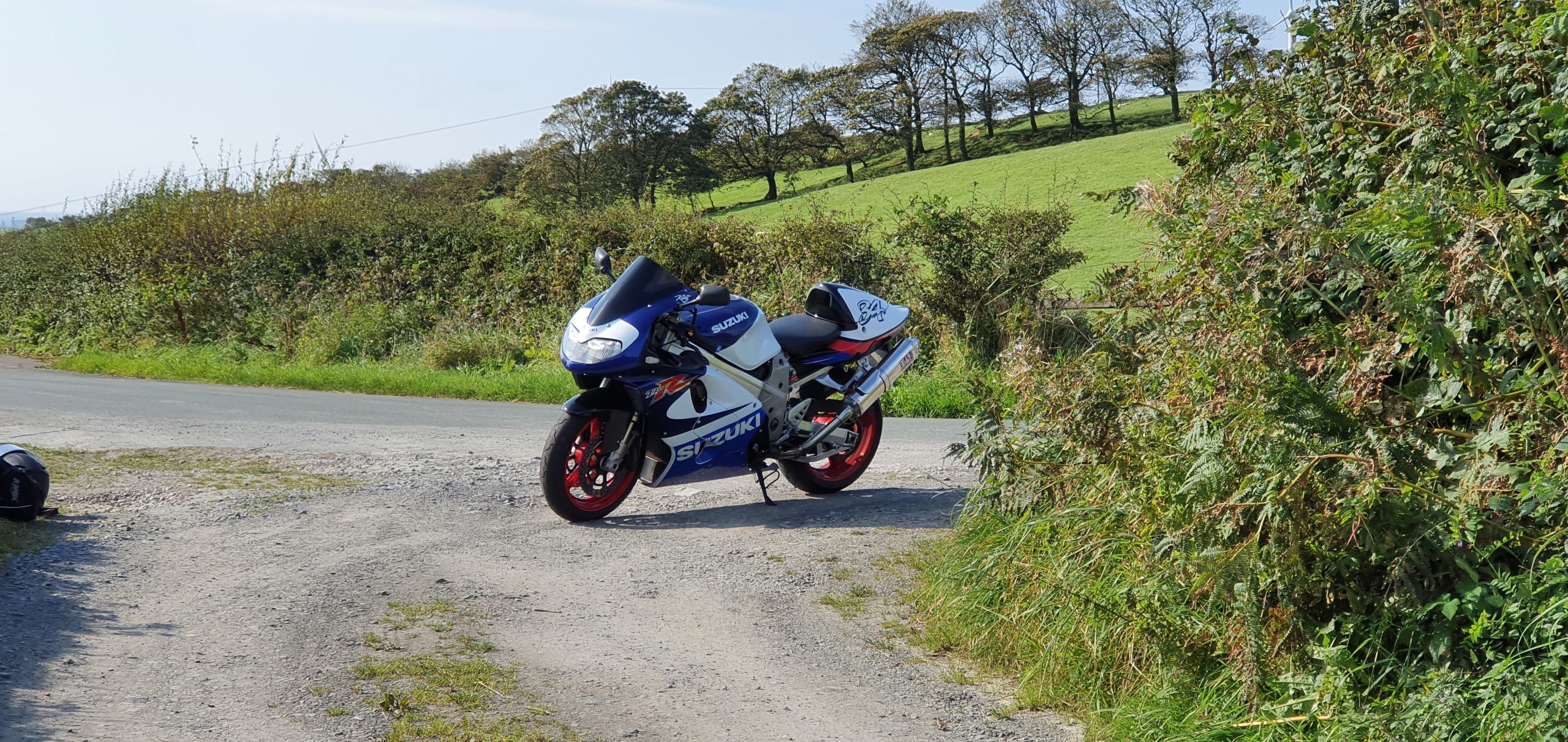
An hour or so in, and I’m slowly starting to figure the TLR out. It’s a riding experience like no other and the bike absolutely demands respect. The rule of slow in and fast out definitely applies on this bike, the engine braking is lovely and strong to help you scrubbing speed off and the low end torque is plentiful, as you would expect with a v-twin superbike.
As with most bikes of this era, there isn’t really anything in the way of rider aids. Grab a handful of throttle and the front wheel instantly goes light, this is something to be very weary of especially with the unusual handling. It would be stupidly easy for the back end to step out on a fast corner if you’re not careful! It’s easy to see why the TLR’s older brother acquired the name “The Widow Maker”.
I would just like to take a moment to thank our friends at JD Comps for sponsoring this article and video, they are also giving you the chance to win the very bike featured along with many other awesome prizes. Please do take a look at their website and see what you need to do to get involved.
Closing Thoughts:
Concluding this Suzuki TL1000R Review – after spending the day with this bike I can confirm that it is a bit of an animal. The V-twin motor is fantastic and pulls like a train all the way through the rev range. The handling is interesting, while it isn’t bad it does take a lot of getting used to. This bike oozes character and it’s definitely something you need to learn how to ride to get the most from it. While the SP1 was deemed as the better bike, that doesn’t make the Suzuki a bad bike by any means. These things are quickly becoming collectable now and mint examples like this one are always sought after. Being that you can get a cracking 1000R for the same price as an abused 916, it really does make a lot of sense.
I probably wouldn’t recommend opting for this bike for a track bike, I think if you were to push it to the limits you would really want to spend some money on upgrading the suspension. But, if you are after an interesting road bike, something that will always put a smile on your face, something different to the norm, something that’s a part of motorcycling history and something that you absolutely won’t loose money on, I would gladly suggest you consider a TL1000R.
Ratings:
The V-twin and gearbox combination are fantastic and definitely the bikes biggest asset.
The TLR’s biggest flaw. There’s lots of room for improvement here, which is disappointing. Perhaps if Suzuki had sorted this out from the start things might have been different for the TLR.
The factory brakes are more than capable, though there is room for improvement. The back brake especially feels very strong, which is unusual for a sports bike.
Hit and miss, the overall build quality is very good but there has been stories of chains rubbing against the swing arm if the rear wheel isn’t aligned perfectly, electrical gremlins and weak clutch springs.
An iconic part of history that can be snapped up at a bargain price. It will take a little bit of taming, but if you put the time in the rewards are huge.
Suzuki TL1000R (1998–2003) FAQs
What’s the difference between the TL1000R and TL1000S?
The R is the faired, racier version with a twin-spar frame, different geometry and higher peak power; it’s heavier but more stable at speed than the S.
What’s the deal with the rotary rear damper?
The stock rotary damper can overheat on hard road/track use and feel harsh. Many owners fit a quality shock conversion (Öhlins/Penske kits) for better control.
Real-world top speed?
Around 165–170 mph in stock trim, depending on conditions and gearing.
Common issues to check?
Charging/rectifier reliability, cam-chain tensioners, fuel pump/filters, and play in the linkages. Look for evidence of a shock upgrade and regular servicing.
Is it comfortable for taller riders?
More roomy than many 600s, with ~805 mm seat height. Clip-ons are still low; bar risers and a double-bubble screen help on longer rides.


